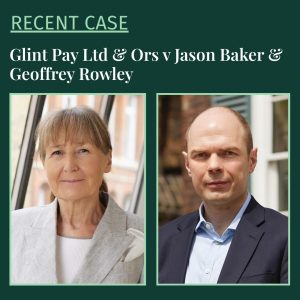
Recent Cases
Judgment handed down in Greensill claim between Credit Suisse and Softbank
Insolvency, Banking and financial services, Commercial disputes
Daniel Lewis
Wednesday 15 October 2025
Insolvency, Company lawTuesday 11 June 2024
The much-anticipated BHS judgment is here.
For those without the time to digest all 533 pages immediately, we have summarised the key points below:
Lexa Hillard KC and Rachael Earle acted for Mr Henningson.

People to view:

Recent Cases
Insolvency, Banking and financial services, Commercial disputes
Daniel Lewis
Wednesday 15 October 2025

News
We are delighted to announce that Wilberforce has been shortlisted in five categories at the Chambers UK Bar Awards 2025.
Friday 29 August 2025
View more
Recent Cases
Insolvency
Lexa Hilliard KC | Jack Watson
Monday 18 August 2025

Recent Cases
Commercial disputes, Insolvency
Thomas Grant KC | Daniel Lewis
Tuesday 29 July 2025